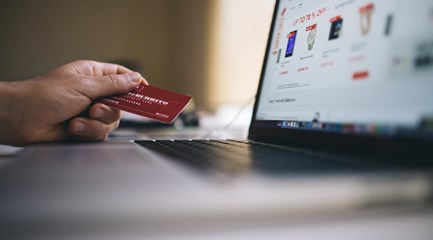As Christmas shopping fever takes hold, everybody is on the look out for a bargain. But if a deal looks like it’s too good to be true, then the chances are that it probably is.
There has been a huge increase in the number of counterfeit and sub-standard electrical goods coming into the country. And these fakes follow the trends in must-have items – the number of fake mobile phones seized has risen by more than 50% with other top electrical fakes including hair straighteners and games.
Over the last three years there has also been a big increase in the use of social media to advertise and trade in counterfeit goods, with thousands of items being made available on a daily basis. A quarter of people said that they have seen fake products openly advertised on sites like Facebook.
Seeing such open trading may lead you to think that the products must be safe to buy. But fake goods often contain faulty parts that can cause products to overheat and even catch fire. And if you buy a counterfeit product there is no system in place should something go wrong, and it can be impossible to return a faulty fake product to the seller.
Worryingly, our research has shown that:
- 24% of people have knowingly bought a counterfeit product
- 21% would consider buying one in order to save money
- 16% do not think counterfeit products could put them at risk.
Our advice is to stick to reputable retailers – on the High Street and online – and have a look at our Safe Shopper’s Guide for more advice on buying safely!
Top Five Checks to Avoid a Fake Christmas
- Check the reviews: Use online review websites to find out what people are saying about products and sellers and take advantage of website checkers set up by companies to confirm you are buying from an approved stockist.
- Check the seller: Look for the seller’s contact details and ensure there is a full address, not just a PO Box number. Not all websites with a .co.uk address are based in the UK. If the seller is well established or you have bought from them before you are more likely to have confidence.
- Check the price: Do a price check on products – if it is markedly cheaper than you’d expect, alarm bells should ring. If a bargain looks too good to be true, it probably is.
- Check the purchase process: Look for websites that allow you to pay safely – these have a padlock symbol on your screen when you are filling in your payment details – but don’t assume safe payment definitely means your purchase is genuine. Also ensure there is a returns or complaints procedure should you be unsatisfied.
- Check the product: When it arrives, firstly check for damage or loose wires, then check the voltage is 230V, 50Hz (the UK’s usual domestic voltage) and that they are fitted with a three-pin UK plug or charger. Also check the packaging note – does it come with instructions and a guarantee? If you have any suspicions about a product’s safety, or if you think it’s a fake, do not use it.
Charley Says
We’ve enlisted the help of the nation's favourite safety character, Charley the cat, to help us spot an electrical fake – check out our new Charley Says film, voiced by the versatile David Walliams, and pass the message on!
Bad Elf
We've created a special seasonal safety video to help demonstrate the dangers of counterfeit goods. Introducing Bad Elf who has a few money saving ideas for Santa's workshop...
More posts by Penny Walshe



